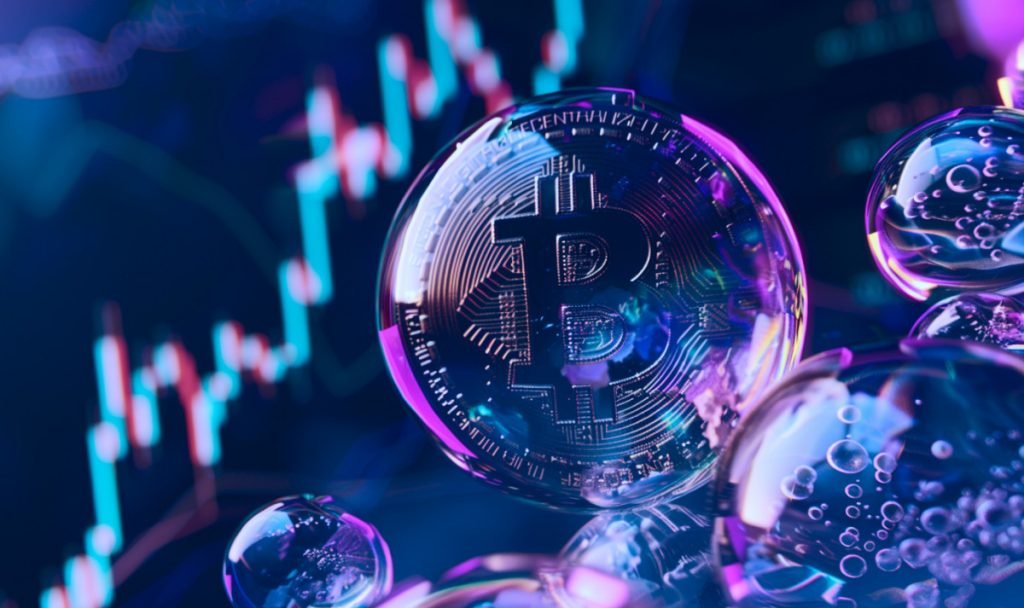What Are Crypto Bubbles? Causes & How to Avoid Them

A crypto bubble is a sharp rise in cryptocurrency prices that is not supported by its actual value. Prices climb due to investor speculation, hype, and media buzz. People start to buy only because they expect others to pay more later. This creates an unstable price level. At some point, reality catches up. The excitement fades. Prices crash. Investors lose money. This cycle is common in financial history, and crypto is no exception.
Crypto bubbles are different from normal market trends. In a normal trend, prices increase due to better use cases or stronger technology. But in a bubble, prices increase just because everyone else is buying. The real value doesn’t grow. It’s an illusion built on emotions and hype.
Causes of Crypto Bubbles
Hype and Speculation
Most crypto bubbles start with a new trend. It could be a new coin, blockchain, or DeFi platform. Media and social media play a big role. They spread stories about massive profits. Influencers promote the next big token. This draws in new investors. They fear missing out. This is known as FOMO. As more people buy in, prices rise even faster.
Easy Access to Investment
The crypto market is open 24/7. Anyone with a phone can buy tokens. There are no strict regulations. Many platforms offer leverage. This means you can borrow money to invest more. It increases buying pressure. But it also increases the risk. When things go bad, they crash hard.
The Greater Fool Theory
This idea says you can buy an overpriced asset, as long as someone else is willing to pay more. It works for a while. But once the buying stops, the price collapses. Many people get stuck holding worthless tokens.
Famous Crypto Bubbles in History
Bitcoin in 2017
Bitcoin surged from under $1,000 in January 2017 to nearly $20,000 by December. The growth was fast and wild. Everyone wanted to buy. Even people who didn’t understand crypto joined the craze. But in early 2018, the market collapsed. Bitcoin lost over 80% of its value. Many altcoins lost even more.
ICO Boom of 2017–2018
Initial Coin Offerings (ICOs) became popular in 2017. Startups raised millions by selling new crypto tokens. Most had no working product. But people still bought in. They hoped to sell later for a profit. By late 2018, most of these projects failed. Billions of dollars vanished.
Terra (LUNA) Collapse in 2022
LUNA and UST were part of a major blockchain ecosystem. UST was a stablecoin, meant to hold value at $1. It lost its peg. LUNA crashed from $119 to near zero. The collapse wiped out over $40 billion. It shook the crypto world.
Squid Game Token Scam
In 2021, a token called SQUID launched, claiming to be linked to the popular Netflix show. It soared by over 75,000% in days. Then the creators disappeared. The token became worthless. This was a clear rug pull. A scam that took millions from small investors.
The Phases of a Crypto Bubble

1. Innovation and Excitement
The bubble starts with something new. A new token, a meme coin, or a DeFi app. Early adopters invest. The idea spreads. Media picks it up.
2. Rapid Price Increase
Prices rise fast. Investors believe they are missing out. Even cautious people jump in. This drives prices even higher.
3. Media and Public Mania
News outlets report record highs. Celebrities endorse crypto. Social media explodes with discussions. More people join, hoping to get rich quick.
4. Warning Signs and Cracks
Some experts warn of overvaluation. Scams and failed projects appear. Large investors begin to sell. Prices become unstable.
5. Crash and Panic Selling
A trigger causes panic. It could be regulation, a hack, or a scam. People rush to sell. Prices fall hard. Many investors lose money.
How to Spot a Crypto Bubble
- Fast and extreme price gains in a short time.
- No clear use case or weak project fundamentals.
- Overhyped promotions on YouTube, Twitter, and TikTok.
- Celebrity endorsements with no technical background.
- Fear of missing out (FOMO) among investors.
- Promises of guaranteed returns or “risk-free” profits.
If you see these signs, stay cautious.
Risks of Crypto Bubbles
Financial Losses
When bubbles burst, prices crash. People who bought at the top lose most of their money. Many never recover their investment.
Mental and Emotional Stress
Losses lead to regret, stress, and depression. Some people invest life savings. The impact is not just financial.
Scams and Fraud
Bubbles attract scammers. Fake tokens, rug pulls, and Ponzi schemes become common. Lack of regulation makes it easier for bad actors.
Loss of Trust
Every major crash harms public trust in crypto. New investors leave the market. Regulation becomes stricter. Growth slows.
Lessons from Past Bubbles
- Don’t invest more than you can afford to lose.
- Do your own research. Don’t follow hype blindly.
- Stick to projects with real utility and strong teams.
- Watch market sentiment. When everyone is too excited, it may be time to exit.
- Use risk management. Set stop losses and take profits when needed.
Conclusion
Crypto bubbles are real. They happen when greed overtakes reason. Prices rise based on emotions, not real value. Many people get rich quickly. But even more lose money when the bubble bursts.
To protect yourself, stay informed. Look beyond the hype. Study the project before you invest. Diversify your holdings. And most importantly, stay calm during market highs and lows. In crypto, patience and caution often win.
